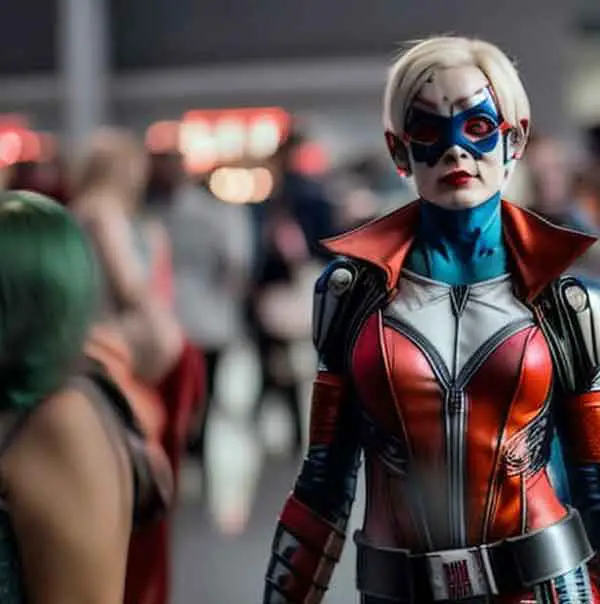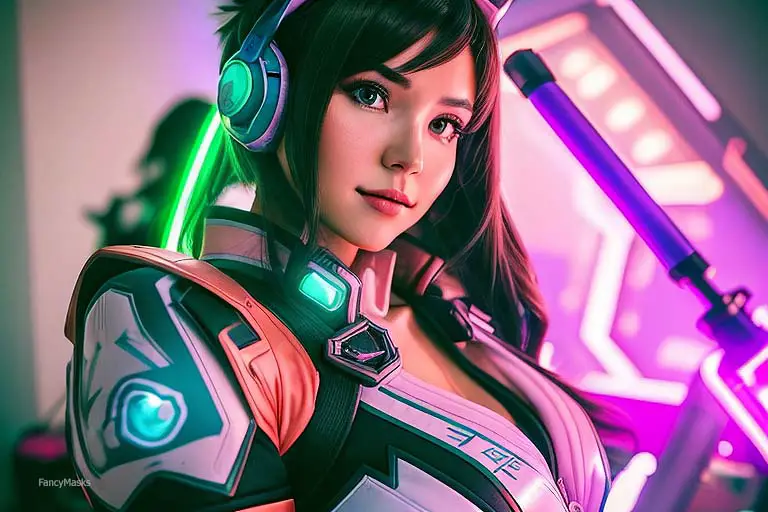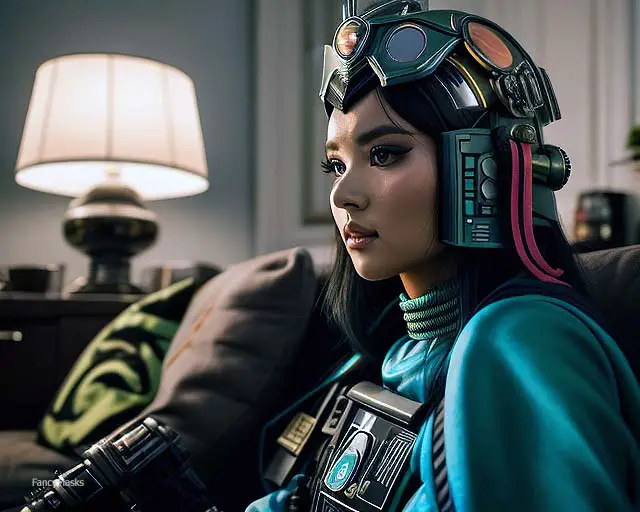Corsets have been an enduring fashion item that has been around for centuries and has undergone several transformations in terms of design, fabric and style. Corsets have always been a popular clothing item in the fashion industry, but recently, they have also become a staple in the cosplay world.
Cosplay is all about dressing up as fictional characters from video games, movies or comic books and recreating their look with great attention to detail. A well-crafted corset can add an extra layer of authenticity to any cosplay costume.
The use of corsets in cosplay has gained immense popularity over the years due to its ability to accentuate feminine curves and create a more defined silhouette. While some people may believe that corsets are uncomfortable or unhealthy, this is simply not true when worn properly and made from quality materials.
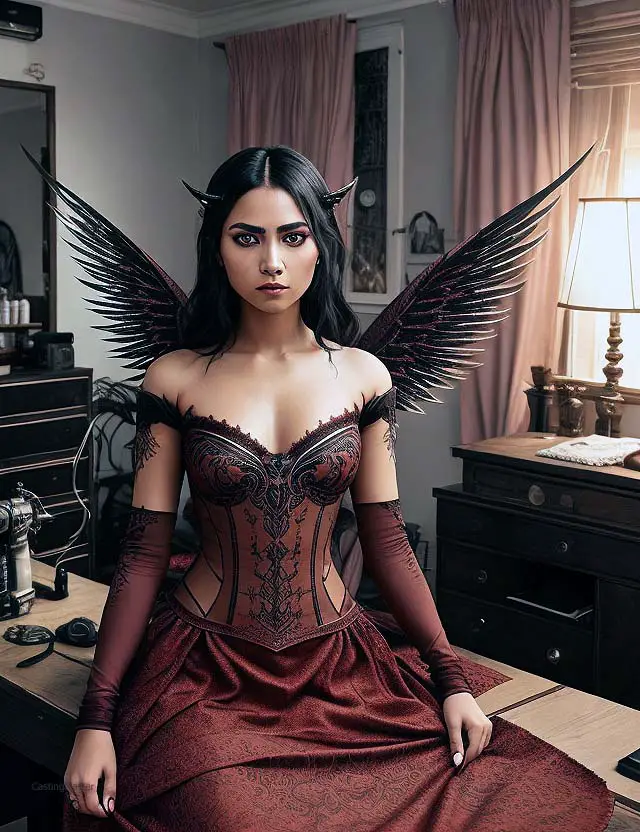
In fact, wearing a well-made corset can actually improve posture while making you look great at the same time. There are different types of corsets used in cosplay depending on the character being portrayed.
Overbust corsets cover the entire chest area while underbust corsets only go under the bust leaving room for other clothing items such as shirts or blouses. Bustiers are similar to overbust corsets but do not provide as much coverage while waist cinchers focus solely on slimming down your waist area.
Crafting your own custom-made cosplay corset can seem like an intimidating task for beginners. However, there are plenty of resources online available that provide step-by-step guides on how to make your own cosplay-worthy corset without breaking the bank.
Historical costumes such as those found in Victorian England often incorporate corsetry as a foundational garment. The trend continued throughout pop culture especially during the early 2000s with iconic films such as Moulin Rouge which showcased elaborate costumes featuring over-the-top designs and intricate details. Despite its widespread use among cosplayers today, there are still misconceptions surrounding the corset in the cosplay community.
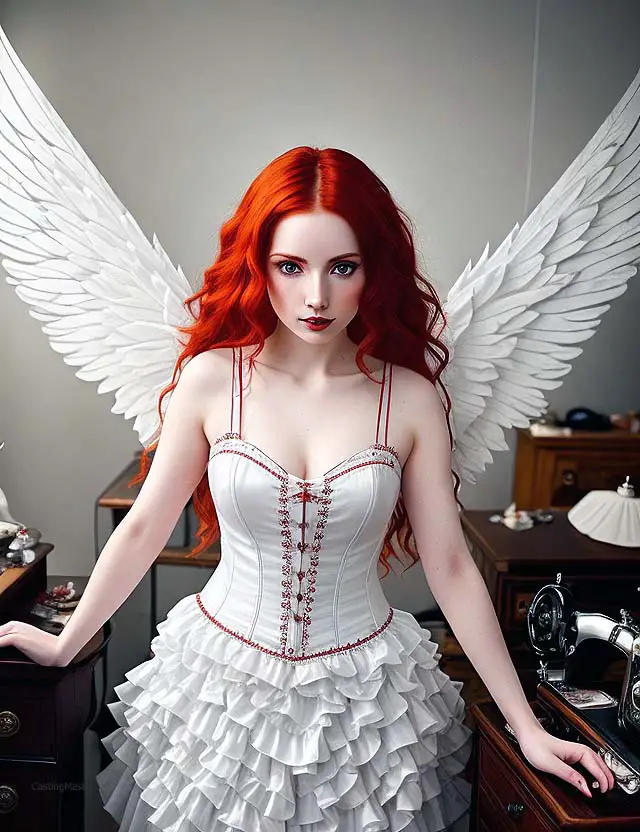
Some individuals believe that corsetry can lead to body shaming and perpetuate unrealistic beauty standards. However, it is important to remember that body positivity and acceptance are at the core of cosplay and wearing a corset should always be a personal choice rather than an obligation.
The Popularity Surge of Corsets in Cosplay
It’s not hard to notice the popularity surge of corsets in cosplay. Whether you’re an avid cosplayer or simply a casual observer, you can’t help but take notice of their allure. And why wouldn’t you?
Corsets are an elegant and timeless garment that have stood the test of time. They have always been associated with grace, poise, and sensuality – all values that correlate well with cosplay aesthetics.
Overbust corsets are particularly popular in cosplay due to their ability to provide excellent support, create a stunning silhouette, and often feature intricate designs that complement many different historical or fantasy costumes. While historically corsets were made from materials such as whalebone or steel boning, modern versions use flexible plastic boning or synthetic materials for greater comfort and durability.
This evolution has only made them more versatile for cosplay fashion. Bustiers have also seen a resurgence in popularity recently amongst cosplayers.
Although they may look similar to overbust corsets, they lack the same level of support and compression while still producing a flattering shaping effect on the wearer’s body. Bustiers are typically made from stretchy materials that conform to your figure while also remaining breathable during long hours spent in convention halls.
Underbust corsets, on the other hand, offer more freedom of movement while still accentuating a person’s curves and figure. They’re also easier to wear for longer periods compared to overbust corsets since they don’t interfere with breathing and allow greater flexibility during physical activities such as fighting sequences or dance performances.
Corset comfort is often brought into question when discussing their popularity in cosplay culture; however modern corsetry has come a long way since its inception from uncomfortable stiff boning against bare skin. Now they come equipped with adjustable straps and breathable fabrics ensuring maximal ventilation alongside being secure on the body (aided by waist cinchers) allowing for unrestricted movement whilst still keeping its’ shape – perfect for cosplayers who want to remain both comfortable and stylish all day long.
It’s no surprise that corsets have seen a surge of popularity in cosplay circles. They offer a stunning, timeless aesthetic while also being versatile and practical.
As body positivity becomes more important in the cosplay community, corsets have become an empowering tool for people to express themselves confidently. With new crafting techniques, materials and designs emerging all the time, we can only look forward to what exciting trends the future of corsetry in cosplay will bring.
Tracing the Origins of Corsets
The origins of corsets can be traced back to the 16th century in Europe, where they were used as garments to shape and support the torso. The earliest versions of corsets were made out of stiffened fabric and metal boning, creating a conical shape that accentuated the waist and pushed up the bust. However, it wasn’t until the Victorian era that corsets became mainstream fashion for women.
Throughout history, corsetry has been used to modify the body’s natural shape. Corsets were designed to create an hourglass figure by cinching in the waist and enhancing the curves of women’s bodies.
It was not uncommon for women during these times to wear corsets for long hours every day, leading to health problems such as weakened abdominal muscles and restricted breathing. Corsetry in pop culture has long been portrayed in various forms of media such as movies, TV shows, and books. The type of fabric for a cosplay corset will go a long way in determining how comfortable it is.
In many of these depictions, corsets are often associated with fetish wear or sexual subcultures. However, there is more to corsets than just their sexual connotations.
Cosplay fashion has also played a significant role in popularizing corsets among modern audiences. Corsets have become a staple piece for cosplayers due to their ability to create visually stunning costumes with intricate details.
Corset aesthetics have also evolved from traditional underbusts or overbusts into more modern styles such as waist cinchers or bustiers. Many people hold misconceptions about corsets when it comes to comfort and health concerns.
While they are known for being restrictive and uncomfortable at times, modern-day corset materials have improved significantly. Today’s designs take into account both comfort and functionality while still providing shaping benefits.
In recent years there has been increased conversation around body positivity in cosplay communities as well as overall acceptance towards unconventional body shapes and sizes. This shift has led cosplayers of all genders, ethnicities, shapes/sizes to embrace corsets as a way to celebrate their bodies and showcase their cosplay skills.
The origins of corsets are rooted in shaping the female body, and over time have grown into mainstream fashion. With recent efforts towards body positivity in cosplay and an increased interest in historical costumes, we predict that corsets will continue to appear in cosplay designs for years to come.
The Evolutionary Journey of Corsets
Corsets have existed for centuries, and they have changed a lot in terms of style, design, and materials used. The journey of corsets is quite impressive, starting from whalebone corsets to modern-day steel-boned ones.
Corset crafting has come a long way, with new materials being used every day. The development of corsetry was mostly influenced by the fashion trends of different eras.
In the 16th century, corsets were made from stiffened linen or leather that was heavily boned with reeds or whalebones. This type of corset was quite uncomfortable; however, they were effective at reducing waistlines and creating an hourglass silhouette.
By the late 18th century, stays replaced the traditional whalebone design with lighter materials such as buckram or pasteboard. During the Victorian era (1837-1901), overbust corsets replaced underbust styles due to changing aesthetics in fashion.
Victorian-era undergarments had evolved considerably since their inception in the late 1700s when fashion dictated a high-waisted silhouette rather than an accentuated hourglass shape that emerged later on. In the early twentieth century, young women started rebelling against constrictive clothing styles and embraced looser clothing instead – this included shedding their strict corsets and adopting less constrictive alternatives like waist cinchers or bustiers.
By this time period, women’s liberation movements had started to emerge as well as a push towards body positivity in cosplay. As pop culture evolved so did its influence on fashion trends –corsetry included.
During the 1980s Madonna popularized wearing underwear as outerwear which brought back bustiers into mainstream culture albeit with some aesthetic tweaks such as bright colors or sequins. Metal stays replaced boning altogether by around 1914 when elasticated fabrics became readily available.
Today’s modern-day steel-boned corsets combine aesthetics with comfort and health – diverging from misconceptions of corsets and their harmful nature. As cosplay fashion continues to evolve, it is clear that corsets continue to hold a place in the community with historical costumes often taking center stage.
Exploring Various Types of Corsets
Corsets have been a part of fashion history for centuries.
Over the years, they have evolved and taken on many different forms. In cosplay, corsets are used to create a variety of looks from historical costumes to pop culture characters.
Let’s take a closer look at some of the different types of corsets used in cosplay.
Underbust Corsets:
Underbust corsets are designed to sit under the bustline and come down to the hips. They are often used in cosplay as they provide support and shape without restricting movement too much.
Underbust corsets can be made from a variety of materials such as leather, satin or lace.
Overbust Corset:
An overbust corset is a type of corset that covers the entire torso, including the bust area. They are often worn as stand-alone pieces or layered with other clothing items.
Overbusts can provide more shaping and support than underbusts due to their extended coverage.
Bodice/Bustiers:
Bodices or bustiers are similar to overbust corsets but typically shorter in length, ending just below the bustline. Bustiers have cups for breast support while bodices do not.
These types of garments were popular during medieval times and can be seen in many historical costumes.
Waist Cinchers:
Waist cinchers are smaller versions of traditional corsets that focus mainly on shaping the waist area rather than overall body shaping like larger under- or over-bust models do.. They usually only cover just above- and below-waist regions while leaving upper torso uncovered entirely.
Corset Materials:
Corsets can be crafted from various materials such as lace, satin , leather etc., but each material has its own properties which directly influence comfort levels when wearing them.. Leather is sturdy but somewhat inflexible which might cause pain if it doesn’t fit perfectly, satin has a delicate and luxurious feel but can easily get damaged, and lace is beautiful but delicate which requires extra care when handling it. The type of corset one chooses for their cosplay depends on their personal preferences and the character they are portraying.
Whether you opt for an underbust or overbust corset or cincher with traditional materials like leather or modern ones like neoprene, keep in mind that comfort should come first. With body positivity in cosplay becoming a hot topic these days, it’s important to wear your costume with confidence and pride regardless of your shape or size.
Emergence of Corsets in the Cosplay Universe
Corsets are a popular and staple piece in the cosplay universe, and there is no denying that. Cosplay fashion has witnessed a surge in corsetry in pop culture, leading to an increased demand for corset crafting.
The emergence of corsets in cosplay is closely linked to the aesthetics of historical costumes. This has led to a rise in appreciation of the art of body modification and waist training.
Underbust corsets are one of the most popular types of corsets used in cosplay. They emphasize on an hourglass figure, making them perfect for characters with a slim waistline.
Overbust corsets, on the other hand, provide more support for larger busts while also contouring down to smaller waistlines. Waist cinchers are another type that can be worn over clothing or under it as they provide minimal compression.
In recent years, there has been a trend towards bustiers as they offer similar shaping effects to traditional overbust corsets but are less constrictive and more comfortable. Therefore they can be worn for longer periods without discomfort.
Corset materials have also evolved with time; from traditional bone or metal-boned corsets made from silk or satin fabrics to modern-day flexible plastic boning used to create latex or leather looks. However, misconceptions about wearing corsets still abound within the cosplay community with many people believing that they are uncomfortable and harmful to wear for extended periods; this couldn’t be further from reality!
While wearing a poorly fitting and ill-constructed corset may cause discomfort, well-fitted ones can offer great back support and help improve posture while reducing pain caused by large breasts. It is essential to choose your size carefully when selecting a cosplay costume that incorporates a corset into its design because wearing one that is too small can cause health problems like rib bruises or even deformities over time if worn long-term.
As future trends in cosplay continue evolving, it will be interesting to see how the use of corsets changes. The emphasis on body positivity in cosplay is likely to lead to an increase in the use of waist cinchers or bustiers, which offer comfortable shaping without constricting or altering natural body shapes.
There is also potential for new materials such as bamboo or flexible alloys to be used in creating innovative corset designs that focus on both comfort and style. Overall, the emergence of corsets in cosplay has been a transformative journey, bringing together history and fashion.
They have become an essential part of many cosplayers’ wardrobes, providing both aesthetic value and practical benefits for those who wear them with care. Whether you are a beginner or a seasoned cosplayer, incorporating a well-made corset into your outfit can elevate your cosplay game up several notches!
Corsets: A Staple in Diverse Cosplay Types
When it comes to cosplay, corsets have become a staple item, appearing in a wide range of costumes.
From historical costumes to fantasy and sci-fi characters, corsets have made their way into the cosplay world and show no signs of slowing down. The reasons behind their popularity are many, but one of the main reasons is how versatile they are.
Corsets can be used to achieve an array of cosplay aesthetics. For example, overbust corsets can create a more traditional look for women portraying medieval royalty or Victorian-era socialites.
On the other hand, underbust corsets are perfect for those looking for a more modern, edgy look when portraying characters like Lara Croft from Tomb Raider or Harley Quinn from Batman. Another reason why corsets are popular in cosplay is because they can help achieve certain body modification goals.
For instance, waist cinchers can help create a more hourglass figure by reducing the waistline without binding the chest area like traditional overbust corsets do. Bustiers are also popular among cosplayers who want to show off some skin while still maintaining modesty.
Bustiers provide support and accentuate curves while leaving some skin exposed at the midriff area- perfect for characters like Poison Ivy from Batman or Jessica Rabbit from Who Framed Roger Rabbit. Despite their popularity among cosplayers, there are still some misconceptions surrounding corsets that need to be addressed.
One such misconception is that wearing a corset is uncomfortable and bad for one’s health. While poorly fitting or improperly worn corsets can cause discomfort and even harm your health, properly fitted ones with high-quality materials will not cause any negative effects on your body.
Corsets have become an essential item in the cosplay fashion world due to their versatility in achieving different aesthetics and body modification goals across various types of cosplays- whether historical costumes, modern or futuristic characters. As long as they are properly fitted and made with high-quality materials, corsets can be a comfortable and safe option for cosplayers to enhance their costumes and express themselves creatively.
The Double-edged Sword: Pros and Cons of Corsets in Cosplay
Corsets in cosplay is a staple, but it comes with its fair share of pros and cons. From shaping your waistline to enhancing the overall aesthetics of your cosplay, corsets can add an extra layer of oomph to your costume. However, it is also essential to weigh the downside before jumping on the bandwagon.
One advantage of corsets in cosplay is that they can improve posture. It’s not uncommon for cosplayers to spend hours on their feet in conventions or events.
A well-fitted corset can provide additional support to the back muscles, which reduces fatigue and helps maintain proper alignment. Another pro of sporting a corset is that it can help create a costume’s desired silhouette.
Some characters require an hourglass figure, while others call for a more streamlined look. Corsets are a fantastic tool for recreating different body shapes or modifying existing ones.
On the flip side, some cons come with wearing corsets in cosplay. One significant disadvantage is that they can be uncomfortable and restrict movement when worn for extended periods.
Poorly constructed or ill-fitting corsets can lead to chafing or soreness around the chest, hips, or abdomen. Misconceptions surrounding corsetry are also prevalent in cosplay circles.
Many assume that wearing them promotes toxic beauty standards or reinforces unrealistic body expectations. While this may be true in some cases, it’s crucial not to generalize all people who wear them as being vain or insecure.
Body positivity has become more prominent within cosplaying communities over recent years as more people embrace their bodies and celebrate their unique characteristics without shame or judgment. Crafting your own custom-made corset requires time and skill but provides a level of satisfaction that cannot be beaten.
There are vast opportunities to experiment with various materials such as leather, canvas cotton twill silk brocade metal boning flat steels spiral steels zip ties fishing wire ribbon bias binding eyelets lacing fastenings. With the right tools and a bit of patience, cosplayers can create something truly unique that they can wear with confidence at any event.
Corsets are a fantastic addition to any cosplay costume, but it’s essential to consider the pros and cons before diving in. With the right mindset and preparation, corsets can help you achieve your desired look while also promoting healthy habits and self-expression.

DIY Cosplay Corsets: Making and Wearing Guide
One of the most exciting aspects of cosplay is creating your own costumes.
And when it comes to corsets, making your own can be a fun and rewarding process. It allows you to tailor the corset to your body type, choose unique materials, and add personal touches that make it truly yours.
Firstly, you will need to decide on the type of corset you want to make. There are various options available such as waist cinchers, underbust corsets and overbust corsets.
Depending on your cosplay aesthetics or historical costume inspiration, pick a style that complements your overall look. Next, select a suitable pattern or create your own.
You can find free patterns online or purchase one from a craft store. If you are designing the pattern yourself, ensure that it is proportionate to your body measurements for optimal fit.
When it comes to choosing materials for crafting the corset, there are several options available. You can opt for traditional materials like leather or silk brocade if you want an authentic look for historical costumes.
Alternatively, fabrics like cotton drill or twill work well too and are easier to work with in terms of stitching and shaping. Once you have selected the pattern and material start cutting out pieces as per instructions provided by the pattern’s creator – usually printouts with detailed guidelines will do – then carefully stitch them together according to instructions provided by either the pattern creator or other experts’ guidelines in corsetry crafting.
When wearing a cosplay corset all day at an event or convention body positivity is key! Corsets may seem restrictive but they can actually help support good posture which makes them comfortable even after hours of wear!
Additionally utilizing waist training techniques gradually over time before attending events may assist in reducing discomfort during extended periods of wear while also providing benefits such as long term waistline reduction when worn correctly over time! Creating your own cosplay corset can be a fun and rewarding experience.
Just like with any project, ensure to follow the instructions carefully and take your time with each step. With practice, you’ll become a master at corset crafting and be able to create unique pieces that add an extra flair of authenticity to your cosplay outfits.
Unmasking Controversies: Body Shaming and Stereotypes in Corset Cosplay
When it comes to corset cosplay, there are bound to be controversies that arise. The most common controversy surrounding corset cosplay is body shaming.
Many people who wear corsets in cosplay are often criticized for their body shape and size. This can lead to feelings of inadequacy and self-doubt, which can be detrimental to their mental health.
However, it’s important to remember that corsets have been a part of fashion and costume history for centuries. They were not always seen as a tool for modification, but simply as a garment worn by both men and women alike.
It’s only in recent years that they’ve been associated with body modification or shaming. Another misconception surrounding corset cosplay is that it’s only meant for certain body types.
Many people believe that you need to have an hourglass figure to pull off a corset in cosplay. This just isn’t true!
There are many different types of waist cinchers, underbust corsets, bustiers, and overbust corsets available today that cater to all body types and shapes. That being said, it’s important to note that not all cosplayers may feel comfortable wearing a corset in their costume due to personal comfort levels or health reasons.
While many cosplayers find their comfort level with extended wear over time through trial and error or through investing considerable time in finding the right fit, there may be some who prefer other options when dressing up like historical costumes. But let’s talk about the elephant in the room: the idea of using an external device for modifying one’s appearance may cause misconceptions on its own when seen out of context – especially if done purely for art’s sake such as in cosplaying – which can often perpetuate negative stereotypes about what beauty should look like or how costumes should fit bodies.
This is where body positivity comes into play within the world of cosplay aesthetics. Cosplay fashion should celebrate diversity among bodies and lifestyles, rather than dictate what is socially acceptable.
By embracing body positivity within the cosplay community, we can help combat negative stereotypes and promote a healthier and happier environment for all cosplayers. The future trends in corsetry for cosplay seem optimistic, with more and more individuals embracing body positivity in their costumes.
This includes learning about correct corset crafting techniques that prioritize comfort without compromising style or aesthetics. Whether you’re a seasoned cosplayer or just starting out, there’s never been a better time to incorporate corsets into your cosplay wardrobe while also ensuring your own comfort and confidence shines through your costume.
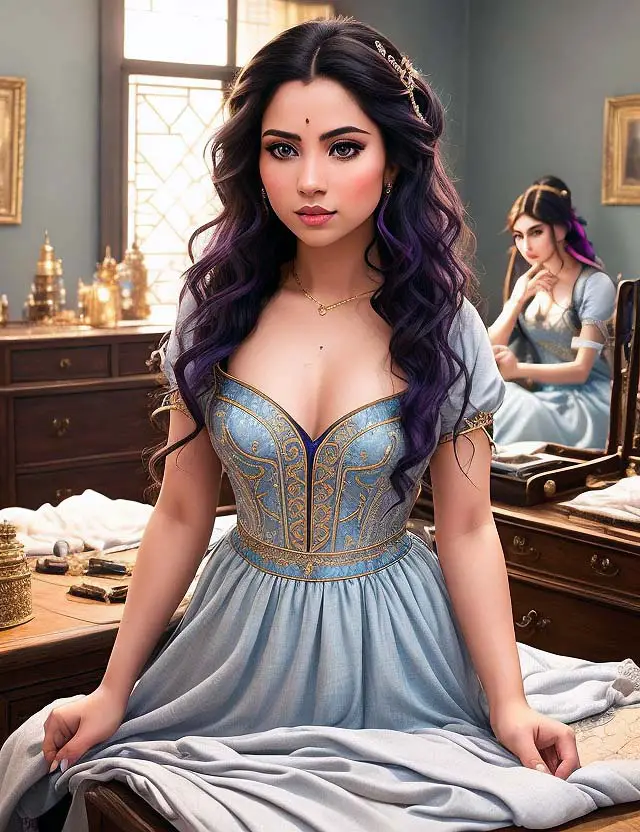
Wrapping Up: The Future of Corsets in Cosplay
As we wrap up this article, it’s exciting to think about the future of corsets in cosplay. With the continued growth and evolution of cosplay as a subculture, it’s likely that corsets will remain a popular choice for many cosplayers.
However, there are also some potential trends and developments that could impact the role of corsets in cosplay. One potential trend is the continued emergence of body positivity in cosplay.
As more cosplayers embrace different body types and break away from traditional beauty standards, there could be a shift towards more inclusive forms of cosplay fashion. This could mean a greater emphasis on alternative styles like waist cinchers or bustiers instead of traditional overbust or underbust corsets.
Another trend to watch is the use of corsetry in pop culture. We’ve already seen examples of this with characters like Harley Quinn or Elizabeth Swan from Pirates of the Caribbean sporting corseted costumes on screen.
As pop culture continues to influence cosplay aesthetics, we may see more characters featuring corsets in their designs. Of course, it’s also important to address some common misconceptions about corsets in cosplay.
One major misconception is that they’re inherently uncomfortable or even harmful to wear for extended periods. While it’s true that poorly fitting or constructed corsets can cause discomfort and health issues, properly made and fitted pieces can actually provide support and improve posture.
Looking ahead, we may also see advancements in materials and techniques used for corset crafting. As with any other aspect of cosplay fashion, there will always be new innovations to explore and experiment with.
Overall, while it’s impossible to predict exactly what the future holds for corsets in cosplay, it’s clear that they’ll continue to play an important role in historical costumes as well as contemporary creations inspired by pop culture references. Whether you’re a seasoned cosplayer or just starting out on your creative journey, incorporating a well-crafted corset into your costume can add a unique and eye-catching touch to your overall look.

